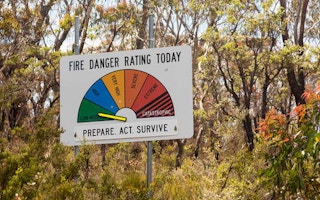Australian climate scientists are eyeing a new tool in their bid to understand the heatwaves and bushfires that swept the country last year: your computer.
While you check emails and watch cat videos, they want to run sophisticated climate simulations in the background.
They will then look at the data in a bid to answer the question: “Have humans made the risk of extreme weather events more likely?”
The experiment is part of the ongoing WeatherHome project, which draws on the spare processing power of thousands of home computers around the world.
“
Volunteers will run software that simulates Australian weather through the whole of 2013
Now in its third year, the project in effect creates a massive supercomputer capable of running 10,000 years worth of climate simulations in just a week.
The project has investigated extreme weather in various regions – most recently floods in Britain that crippled parts of the country earlier this year.
Scientists led by David Karoly, professor of atmospheric science at the University of Melbourne, are hoping thousands of locals will volunteer their spare computing power for the new Australian project.
Volunteers will run software that simulates Australian weather through the whole of 2013.
One simulation will begin with a set of inputs based on actual environmental conditions, including greenhouse gas levels and sea surface temperatures.
A second will use a set of what Karoly calls “alternate reality” inputs, based on how the climate might have looked in the absence of humans – that is, with pre-industrial greenhouse gas levels and sea temperatures.
After thousands of simulations, each throwing up slightly different weather patterns, Karoly and his colleagues hope it will become clear whether certain extreme weather events are more likely in the human-influenced model.
Weather is notoriously difficult to predict and it is entirely possible that the “alternate reality” simulations will throw up their share of extreme weather, Karoly said.
But he is confident the experiment will show human-induced climate change has made heatwaves and bushfire weather more likely.
“The hypothesis is that climate change played a significant role in increasing the frequency of heatwaves and record high temperatures in 2013,” he said.
Each year-long simulation will take an average of about a week to complete, but users can tell their computers to devote more or less power to the program.
A supercomputer could do it in about an hour, but Karoly said it is difficult to get access for the amount of time required to crunch thousands of years worth of data.
Besides, he said, the use of home computers had the added benefit of involving everyday people in climate science.
Those wishing to become involved can visit the WeatherHome project website.










